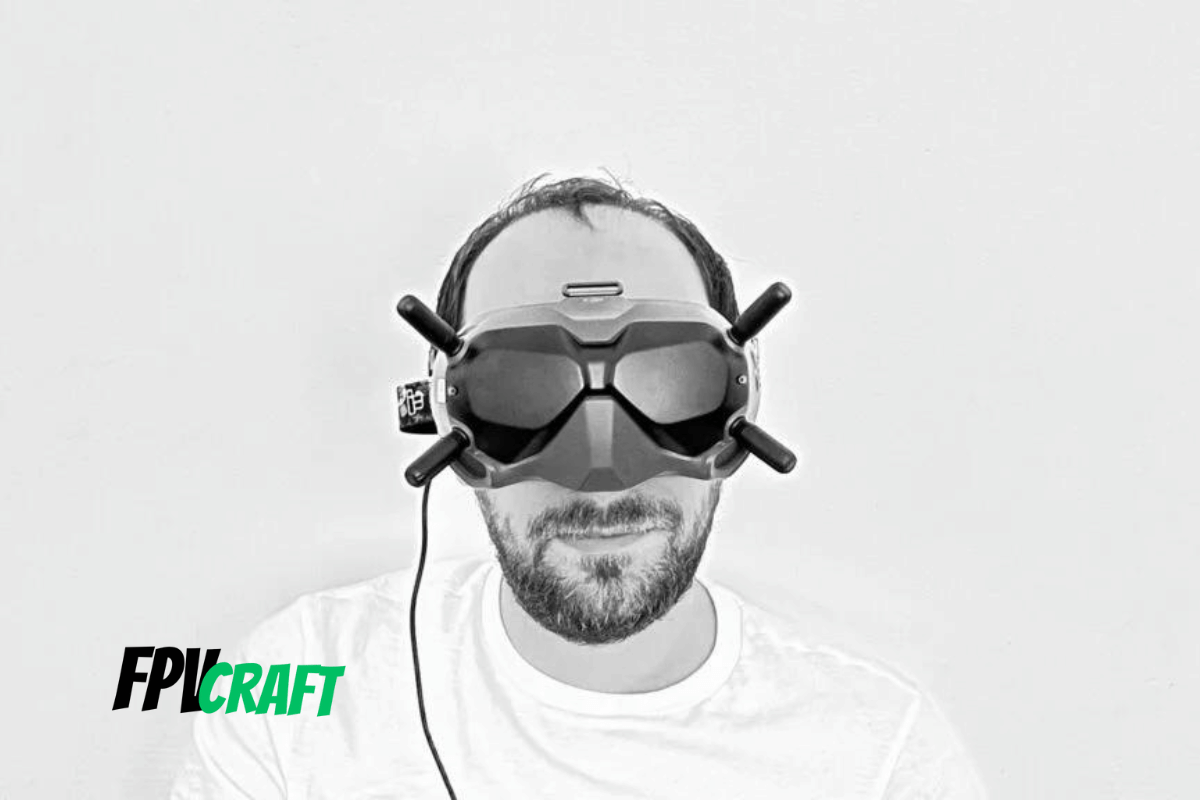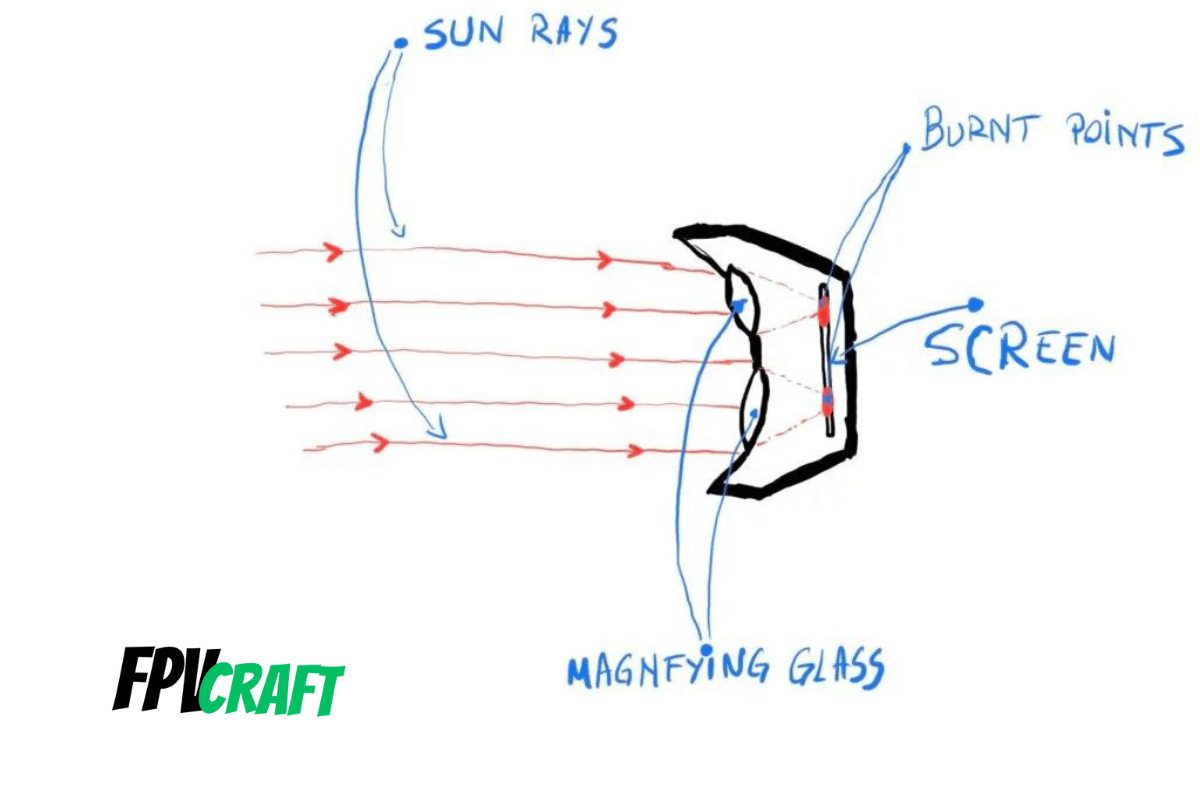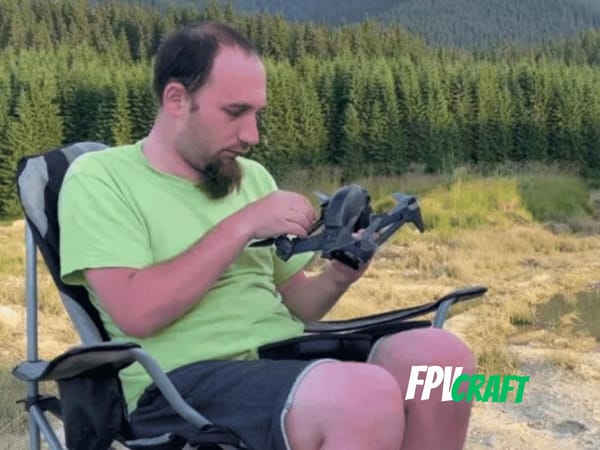9 Tips to Keep Your FPV Goggles Safe
Here we share 9 tips to help you keep your FPV goggles safe - they're easy to break or damage. Keep them safe!

Goggles are an essential piece of equipment in an FPV kit, whether we talk about DJI or other analog goggles.
But the goggles are one of the most vulnerable parts, and although now we don’t think much about keeping them safe, their safety is mostly related to how we handle and use them in the long run.
But there are a few critical factors that may have an impact on the FPV Goggles’ protection.
In this topic, I want to share 9 tips to keep your FPV goggles safe.
How to keep your FPV Goggles Safe
FPV Goggles are not cheap. In fact, they are one of the most expensive FPV parts, which, although you can bind and use them with multiple drones, are relatively vulnerable.
Different goggles come in different shapes and forms, and they may have various structures and internal parts, making them either more or less resistant to transporting, heavy use, and damage.
1 – Don’t let the sun get through your goggles lenses

The FPV Goggles lenses act like a magnifying glass for the pilot to see everything in focus on the screen.
Without those lenses, you cannot focus that close. For instance, put your mobile phone two inches away from your eyes – you simply cannot focus on the screen.
Because of the magnifying glass, if the sun rays are getting through it, they will burn your goggles screen, making it not only unusable but with a good possibility for your goggles to smoke out or even set on fire.
This is the absolute most straightforward way to damage your FPV goggles, whichever they may be, no matter the model.
Sometimes when we are dealing with our FPV drones, preparing, after landing, we tend to place the goggles on the table or on the ground for a few seconds or so because it’s pretty much uncomfortable to keep them on the head when preparing the FPV drone.
But if the goggles are facing the sun and the sun rays are getting through the lenses, it’s game over.
Even for a few seconds, the sun rays through the FPV goggles magnifying glass are strong enough to burn the LED screen, making it unusable.
More likely, you will end up having one or two black spots on the screen, usually covering between 10-25% of the goggles screen.
That’s always crucial not to ever face the FPV Goggles lenses towards the sun rays.
If it’s cloudy and there are no sun rays, your goggles are safe, but beware because it’s challenging to predict if the sun will come out of the clouds or not, and it’s an expensive mistake to make.
2 – Make sure you know what batteries you use to power your FPV Goggles
Usually, goggles are widely compatible with a series of Lipo batteries, wherever they are 2s, 4s, and so on.
For instance, the DJI FPV Goggles v2 has a rated voltage to function between 11.1-25.2 V, according to DJI. It can support both the original batteries or custom Lipo batteries that can be connected with a TX60 to DC power cable.
As the DJI FPV Goggles v2 has an extended voltage range, it is still not okay to use very high voltage batteries, although under the upper limit.
But other goggles may not have such rates. And if you connect a Lipo battery with higher voltages than is supported, your goggles will smoke out.
It is only logical that this is basic knowledge, but when in a rush, you can make mistakes, and maybe you don’t differentiate a 4s from a 6s battery, where your goggles may not support 6s.
3 – Do your FPV Goggles have active cooling?
Let’s take as an example again the DJI FPV Goggles v2. It has active cooling, and usually, the fan starts not long after the goggles are turned on.
The fan speed will fluctuate, but by mistake covering the fan input, getting full of dust, or placing the goggles turned on in the wrong place (e.g., between clothes), the ventilation will be obstructed, causing the goggles to overheat.
Typically, there should be safety measures that will shut down the goggles in case they overheat. But that’s not guaranteed it will happen.
As well, a failing fan on your FPV Goggles may further cause your headset to overheat. If you feel something is not okay with the cooling of the goggles, you should stop using them until they are properly repaired.
4 – Beware of your FPV Goggles antennas when you store and transport them
Yet another good example would be the DJI FPV Goggles v2, which has terrible-quality material antennas. If you force it, even slightly, you can hear it cracking.
The goggles’ antennas are vulnerable, but those can be changed. What is worse if you transport or store your goggles wrongly is the SMA/SMF connectors from your goggles.
If these are damaged, you will have a difficult time repairing your goggles. And believe me; they are not invulnerable.
Read More > 27 FPV Tips to Know Before Flying FPV Drones
5 – Keep it away from any water or moisture
There are no such things as waterproof or rainproof FPV goggles. Even the slightest amount of water can get into the goggles; it can be permanently damaged.
When you fly your FPV drones, and it starts to rain, maybe your primary concern is to get your FPV drone back. But even little rain in the goggles can be damaging, as internal parts may be exposed to water droplets. And the active cooling we talked about? That indeed won’t survive nor do any good in case of rain.
But flying with your goggles in misty weather may have the same impact because of the active cooling suction that will create water droplets and moisture inside the goggles.
Storing them for the long term should also be in a dry place, as moisture will damage the internal parts or can form mold, as with old binoculars.
6 – Operating temperature of the FPV Goggles
Most goggles will operate just fine between 0 and 40 degrees Celsius (32 to 104 Fahrenheit), but this means they won’t work well in freezing conditions.
The internal parts will warm up, and the cold air that gets into your goggles due to active cooling may create severe condensation, not only obstructing the visibility of the screen/lens but this can also affecting the internal electronics.
Don’t use the goggles in freezing weather; although they may work, this can damage them in the short or long term.
7 – Always have antennas on your FPV Goggles when operating

This is a crucial part of the FPV goggles, which don’t have only receiving antennas but transmitting antennas as well.
DJI FPV Goggles v2 has four antennas – Two are for receiving, and two can transmit.
Transmitting power can burn the internal module if antennas are not present because
But why are there transmitting antennas in some goggles?
In order for complete communication with a drone, such as the DJI FPV drone with the DJI FPV Goggles V2, transmitting antennas are required to be able to change settings from the goggles and transmit data and information to the drone.
For instance, if you change your resolution, return to home altitude, or any settings from the goggles, these will transmit data to the drone.
If the antennas responsible for such actions are missing, the goggles’ internal module can be permanently damaged.
» READ MORE: Standard GPS Drones vs. FPV Drones Video Latency
8 – Protect your FPV Goggle lenses from dust and dirt
When we keep putting the FPV goggles on, the lenses get dirty; dust settles on the glass or around, etc.
This may not affect the functionality of the goggles but the quality of having a crisp, clear image.
In the worst-case scenario, the dust can get inside between the lens and the screen, which will be very difficult to remove, depending on the goggles you are using.
Fortunately, some goggles may have a sealed system where the lenses and the screens are placed in a specific module where air cannot get inside to dust the inner parts.
But cheaper drones may not benefit from such perks.
I often clean my goggle lenses with alcohol sprayed on a microfiber cloth (dump) and never directly on the lens, and I never had an issue.
9 – FPV Goggles are not resistant to damages
It is good to remember that the goggles are the most fragile parts of an FPV kit, and they can easily get damaged, even dropping from a small distance.
Also, when transporting, be careful where you place them (e.g., in a suitcase between clothes), and don’t put anything heavy on top as these cannot sustain any heavy weight and will be damaged.
How long can FPV goggles last?
If taken care of well, FPV goggles can resist for many years to come.
The batteries can be changed and swapped if these fail, and the internal parts should keep working just fine long term.
Of course, it all depends on what goggles you have.
But to mention, the FPV goggles get outdated every few years because more advanced goggles are being released with better screens, range capabilities, and other perks.
For instance, I got the DJI FPV Goggles v2 soon after the DJI FPV was launched, and even two years and a half later, and with moderate use, these are doing just fine with no issues (except for the ventilator that may fail soon).
If you want to repair damaged goggles, parts can be easily found on the internet, but they are mainly used from other similar FPV goggles.
Ultimately, it is good to know how to keep your FPV Goggles safe if you want to extend your headset’s lifetime.
» READ MORE: How Far Can You Fly the DJI FPV Drone?




